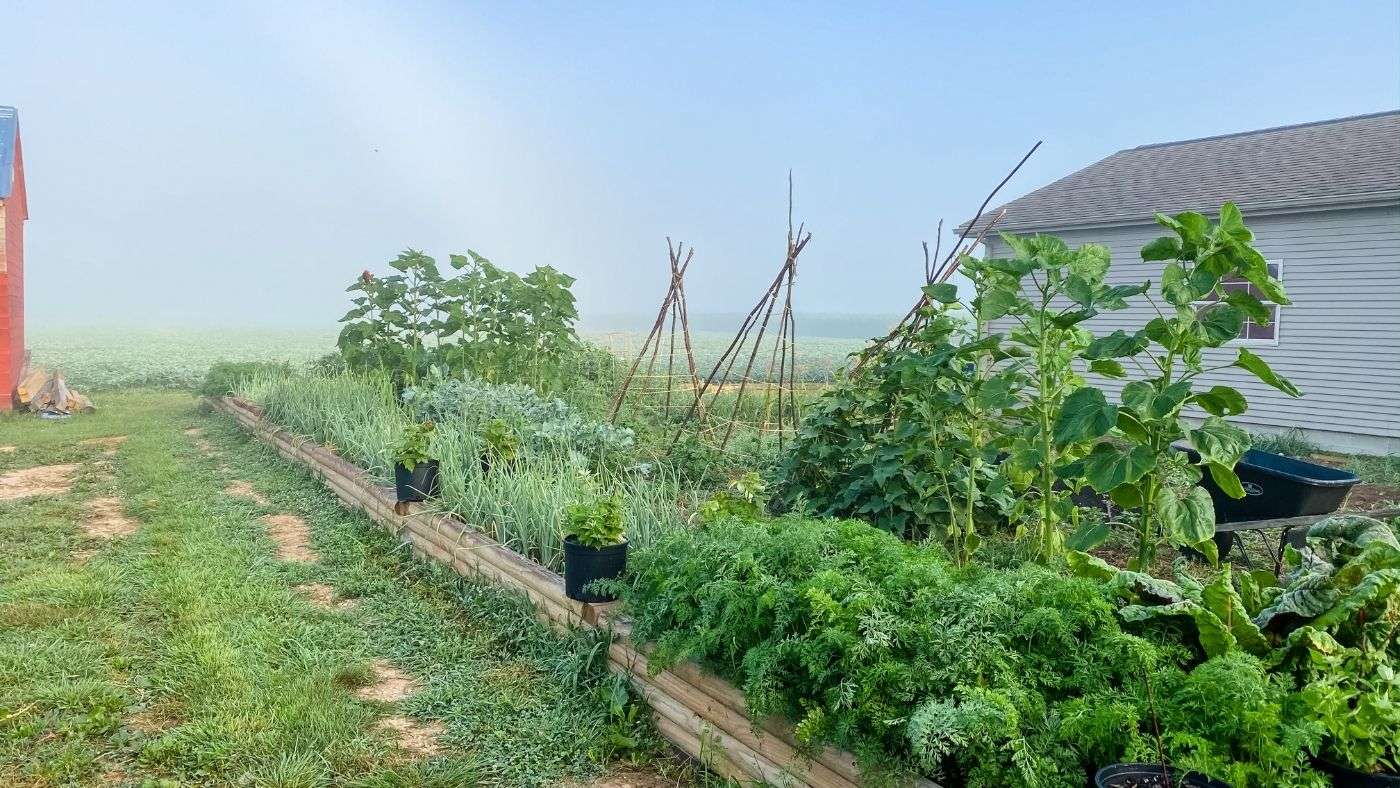In this article, we will discuss how you can achieve a self-sufficient lifestyle and become more independent. We’ll explore the concept of off-grid living and provide practical tips on how to start your journey towards sustainability. By the end, you’ll have a better understanding of what it takes to live a self-sufficient lifestyle and be equipped with ideas on how to get started. Get ready to embark on a path towards greater self-reliance and a greener future!
How to Achieve a Self-Sufficient Lifestyle
Living a self-sufficient lifestyle is becoming increasingly popular as individuals seek to reduce their reliance on external sources and become more self-reliant. It’s about being able to provide for your own needs and those of your family, without relying on extensive support from others or external systems. The quest for self-sufficiency encompasses a wide range of skills and practices, from growing your own food to generating your own energy. In this article, we will explore the various aspects of self-sufficiency and provide guidance on how to achieve this fulfilling lifestyle.
Understanding Self-Sufficiency
What is self-sufficiency?
Self-sufficiency refers to the ability to meet one’s own needs without relying heavily on outside assistance. It involves cultivating a range of skills and adopting practices that enable individuals and communities to become more self-reliant in areas such as food production, energy generation, and resource management.
Benefits of a self-sufficient lifestyle
There are numerous benefits to adopting a self-sufficient lifestyle. Firstly, it allows individuals to have greater control over their resources and reduce their dependence on external systems. This can lead to greater financial independence and resilience in the face of economic uncertainties. Additionally, self-sufficiency promotes sustainability and reduces the individual’s carbon footprint, contributing to a cleaner and healthier environment. Moreover, it fosters a sense of empowerment and fulfillment, as individuals gain a deeper connection with the natural world and their own capabilities.
Different aspects of self-sufficiency
Self-sufficiency encompasses various areas of life. It involves being able to provide for one’s own food, energy, and water needs. It also includes acquiring skills in areas such as sustainable farming and gardening, renewable energy systems, waste management, and basic survival skills. Achieving self-sufficiency requires a holistic approach, incorporating all these aspects to create a sustainable and independent lifestyle.
Assessing Your Lifestyle
Evaluating your current lifestyle
Before embarking on a journey towards self-sufficiency, it is important to assess your current lifestyle and identify areas where improvements can be made. Take some time to evaluate your reliance on external systems and resources. Consider aspects such as your food consumption, energy usage, water consumption, and waste generation. This evaluation will provide a foundation for setting goals and making necessary changes.
Identifying areas of improvement
Identifying areas of improvement is essential to developing a self-sufficient lifestyle. Once you have evaluated your current lifestyle, pinpoint areas where you can decrease reliance on external resources and adopt more self-sustaining practices. This could involve growing your own food, reducing energy consumption, and implementing sustainable waste management practices.
Setting self-sufficiency goals
Setting goals is crucial for achieving a self-sufficient lifestyle. Start by identifying specific areas where you want to become more self-reliant. Whether it’s growing a certain percentage of your own food or generating a portion of your energy needs, defining these goals will provide a clear path forward. Break down your goals into smaller, achievable steps, and track your progress along the way.
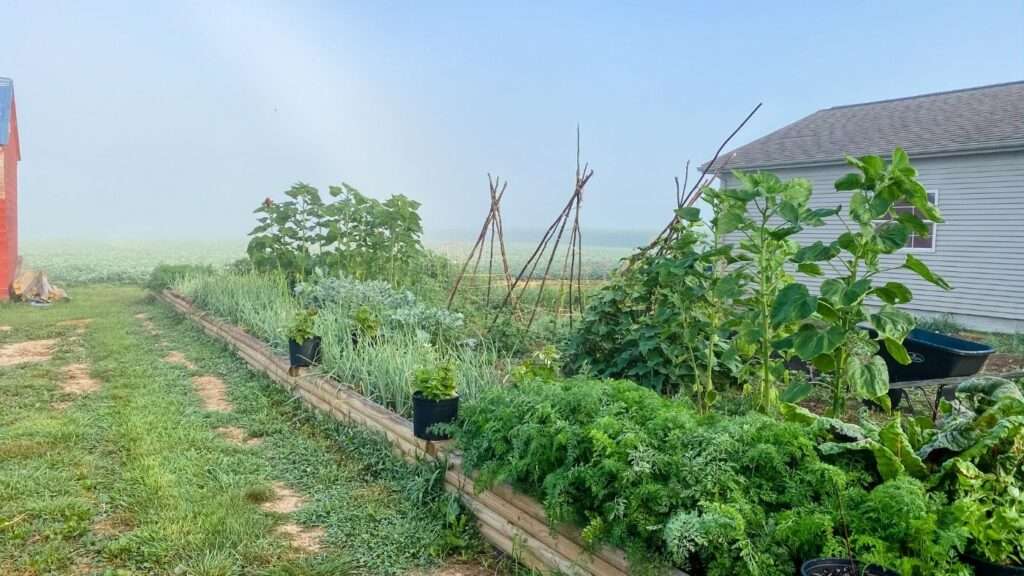
Developing Self-Sufficiency Skills
Sustainable farming and gardening
One of the fundamental aspects of self-sufficiency is the ability to grow your own food. Developing skills in sustainable farming and gardening is essential for achieving this goal. Learn about organic farming practices, permaculture principles, and crop rotation techniques. Experiment with different gardening methods such as container gardening, raised beds, or vertical gardening to maximize your harvest in limited space.
Renewable energy sources
Reducing reliance on non-renewable energy sources is another important aspect of self-sufficiency. Explore renewable energy options such as solar power systems and wind turbines. Learn about their installation, maintenance, and integration into your home’s energy system. Incorporate energy conservation techniques into your daily routine, such as using energy-efficient appliances and optimizing insulation.
Water and waste management
Managing water resources efficiently is crucial for self-sufficiency. Explore rainwater harvesting techniques and implement systems to collect and store rainwater for various uses. Consider installing water filtration systems to ensure a clean and safe water supply. Additionally, adopt sustainable waste management practices such as composting organic waste and recycling to minimize your environmental impact.
DIY projects for self-sufficiency
Learning do-it-yourself (DIY) skills is essential for self-sufficiency. Engage in DIY projects such as building raised beds, constructing a chicken coop, or installing solar panels. These projects not only save resources but also provide valuable skills and increase self-reliance.
Basic survival skills
Developing basic survival skills is essential for self-sufficiency, especially during emergencies or unforeseen circumstances. Learn essential skills such as fire-making, first aid, navigation, and foraging for wild edibles. Gain knowledge on how to be prepared for natural disasters or disruptions in external systems.
Establishing a Self-Sufficient Home
Choosing the right location
When striving for self-sufficiency, the location of your home plays a crucial role. Consider factors such as climate, access to resources, and proximity to local communities. Evaluate whether your chosen location supports your goals for food production, energy generation, and water availability.
Building or retrofitting your home
If you have the opportunity, consider building or retrofitting your home to meet self-sufficient standards. Incorporate sustainable materials, energy-efficient designs, and off-grid capabilities into your home’s construction or renovation plans. This includes features such as proper insulation, passive solar design, and natural ventilation to reduce energy consumption.
Off-grid power and water systems
Implementing off-grid power and water systems is critical for achieving self-sufficiency. Explore options such as solar power systems, wind turbines, or micro-hydro systems to generate your own electricity. Install rainwater harvesting systems and consider drilling a well to ensure a reliable water supply.
Implementing sustainable practices
To establish a self-sufficient home, it is essential to implement sustainable practices in your daily routines. This includes reducing, reusing, and recycling waste, conserving energy and water, and using environmentally-friendly products. Embrace a minimalist lifestyle by prioritizing needs over wants, and consciously consuming resources.
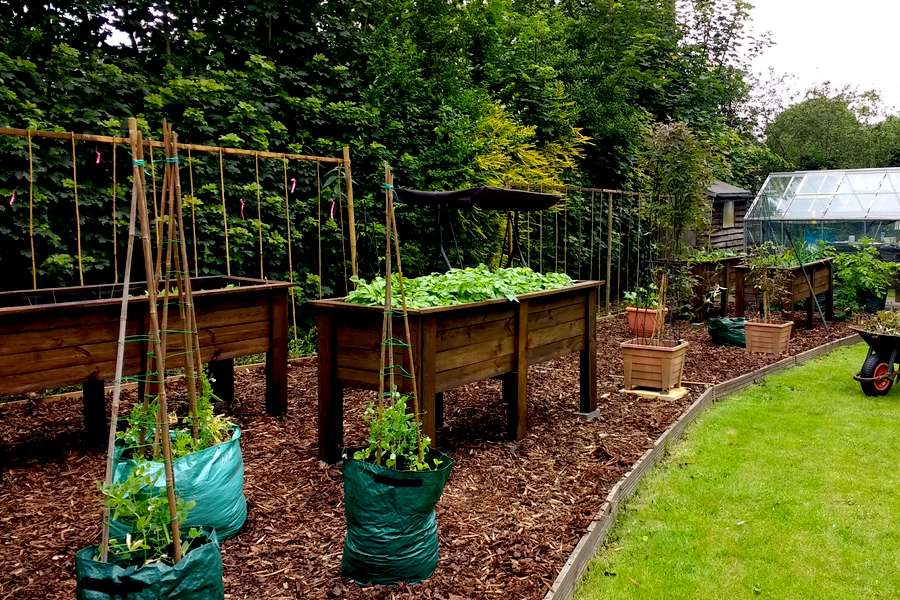
Achieving Food Self-Sufficiency
Growing your own food
Growing your own food is a cornerstone of self-sufficiency. Start by establishing a vegetable garden, fruit orchard, or herb garden in your backyard. Choose crops that are well-suited to your climate and incorporate companion planting techniques to maximize yields while minimizing pest problems. Embrace regenerative agricultural practices to maintain soil health and fertility.
Preserving and storing food
Preserving and storing food is crucial for extending the availability of your homegrown produce. Explore methods such as canning, fermenting, dehydrating, and freezing to preserve fruits, vegetables, and herbs. Invest in proper food storage equipment such as root cellars, pantry shelves, and vacuum sealers to ensure your food remains fresh and accessible.
Raising livestock and poultry
For a more comprehensive food self-sufficiency approach, consider raising livestock and poultry. This could include keeping chickens for eggs, raising goats or cows for milk, or even raising rabbits for meat. Ensure that you have adequate space and knowledge to care for these animals properly, and comply with local regulations.
Hunting and foraging
Hunting and foraging for wild food is another important aspect of self-sufficiency. Educate yourself about local regulations and sustainable hunting practices. Learn to identify edible wild plants, mushrooms, and game animals in your area. Practice ethical and responsible foraging to support local ecosystems.
Building a sustainable food system
Building a sustainable food system involves creating networks with local farmers, producers, and community-supported agriculture initiatives. Support local markets, join food cooperatives, and trade surplus produce with neighboring self-sufficient enthusiasts. By collaborating and sharing resources, you can establish a more resilient and sustainable food system.
Attaining Energy Self-Sufficiency
Solar power systems
Solar power systems are a key component of energy self-sufficiency. Install solar panels on your property to harness the power of the sun and convert it into usable electricity. Explore options such as grid-tied systems or off-grid systems, depending on your location and energy needs. Monitor your energy usage and implement energy-efficient practices to optimize the performance of your solar panels.
Wind turbines and hydroelectricity
In regions with favorable wind conditions or access to running water, wind turbines and micro-hydro systems can also be viable options for achieving energy self-sufficiency. Research local regulations and consult experts to determine the feasibility of implementing these systems in your area. Ensure safe installation and ongoing maintenance for optimal performance.
Energy conservation techniques
Achieving energy self-sufficiency also involves implementing energy conservation techniques. Reduce energy consumption by using energy-efficient appliances and LED lighting, insulating your home effectively, and practicing conscious energy usage. Conduct regular energy audits to identify areas where energy wastage can be minimized.
Implementing off-grid energy solutions
To become fully energy self-sufficient, consider implementing off-grid energy solutions. This may involve investing in energy storage systems such as batteries to store excess solar or wind-generated energy. Research and consult experts to design a robust off-grid energy system that meets your specific needs and ensures reliable power supply.
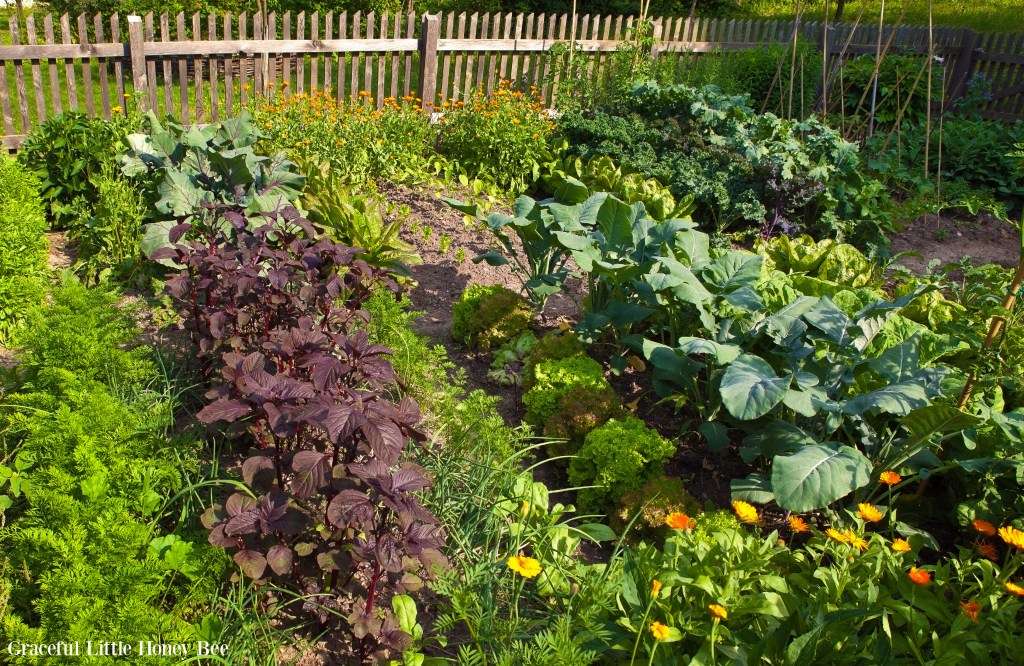
Ensuring Water Self-Sufficiency
Rainwater harvesting
Rainwater harvesting is an effective method for ensuring water self-sufficiency. Install rainwater collection systems such as gutters, downspouts, and storage tanks to capture and store rainwater. Use this harvested water for various non-potable purposes such as irrigation, cleaning, and livestock watering.
Well drilling and water filtration
In areas with limited access to municipal water supplies, drilling a well can provide a reliable source of water. Consult professionals to determine the viability of drilling a well on your property and comply with local regulations. Install proper water filtration systems to ensure the water is safe for drinking and other domestic uses.
Water storage and conservation
Proper water storage and conservation are essential for water self-sufficiency. Implement water storage systems such as tanks or cisterns to store harvested rainwater or well water. Practice water conservation techniques such as using water-efficient fixtures, reducing water usage during daily activities, and practicing efficient irrigation methods.
Purification techniques for safe drinking water
Ensuring a safe drinking water supply is crucial for water self-sufficiency. Explore water purification techniques such as disinfection, filtration, or distillation. Install appropriate water treatment systems to remove contaminants and ensure the water you consume is safe.
Embracing Self-Sufficient Transportation
Bicycles and human-powered transportation
Embracing bicycles and human-powered transportation is an excellent way to achieve self-sufficiency in transportation. Use bicycles for commuting, running errands, or recreational purposes. Promote an active lifestyle while reducing dependency on fossil fuels and minimizing carbon emissions.
Electric vehicles and alternative fuels
Consider transitioning to electric vehicles or vehicles that run on alternative fuels to further enhance transportation self-sufficiency. Electric vehicles offer a clean and renewable option for personal transportation, utilizing electricity generated from your own renewable energy sources. Explore other alternative fuel options such as biofuels or hydrogen fuel cells depending on availability and feasibility in your area.
Carpooling and communal transportation
Complement individual transportation efforts by embracing communal transportation methods. Carpool with neighbors or colleagues, use public transportation systems, or explore community-supported transport initiatives. By sharing resources and reducing the number of vehicles on the road, you contribute to a more sustainable and self-sufficient transportation network.
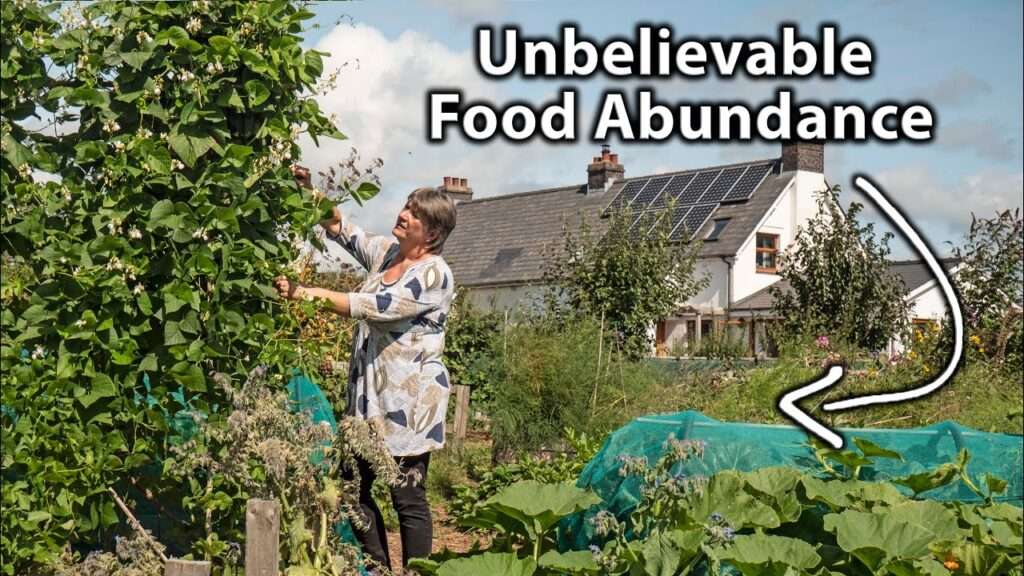
Practicing Self-Sufficient Finances
Budgeting and financial planning
Practicing self-sufficient finances starts with effective budgeting and financial planning. Set financial goals aligned with your self-sufficiency objectives and create budgets that prioritize savings and investments. Track your expenses, identify areas for cost reduction, and make informed financial decisions to support your self-sufficient lifestyle.
Reducing expenses and debt
Reducing expenses and debt is essential for achieving financial self-sufficiency. Minimize unnecessary spending, cut back on non-essential items, and adopt a frugal mindset. Prioritize debt repayment and explore strategies to accelerate the process, such as debt consolidation or negotiating lower interest rates.
Generating multiple streams of income
Creating multiple streams of income is an effective way to enhance financial self-sufficiency. Explore diverse income-generating opportunities such as starting a home-based business, freelancing, or investing in income-producing assets. Diversifying your income sources provides financial stability and reduces reliance on a single income stream.
Bartering and trading
Bartering and trading are age-old practices that can contribute to self-sufficiency. Establish networks within your community and explore opportunities to exchange goods or services directly without involving traditional currency. This fosters a sense of self-reliance and promotes a more resilient local economy.
Nurturing Self-Sufficient Health and Well-being
Growing medicinal herbs and plants
Growing medicinal herbs and plants is an essential aspect of self-sufficient health and well-being. Cultivate a variety of medicinal herbs such as chamomile, lavender, and peppermint to treat common ailments. Learn about their properties and methods for preparing herbal remedies.
Natural remedies and self-care practices
Embrace natural remedies and self-care practices to enhance your well-being. Explore alternative healing modalities such as aromatherapy, acupuncture, or herbal medicine. Prioritize self-care activities such as mindfulness, meditation, and regular exercise.
Promoting mental and emotional resilience
Promoting mental and emotional resilience is essential for self-sufficiency. Develop coping mechanisms and stress-management strategies suited to your individual needs. Cultivate a positive mindset, practice gratitude, and seek support from your local community or like-minded individuals.
First aid techniques
Learning first aid techniques is crucial for self-sufficient health and well-being. Invest time in learning basic first aid skills such as CPR, wound care, and emergency response. Keep a well-stocked first aid kit in your home and familiarize yourself with its contents and usage.
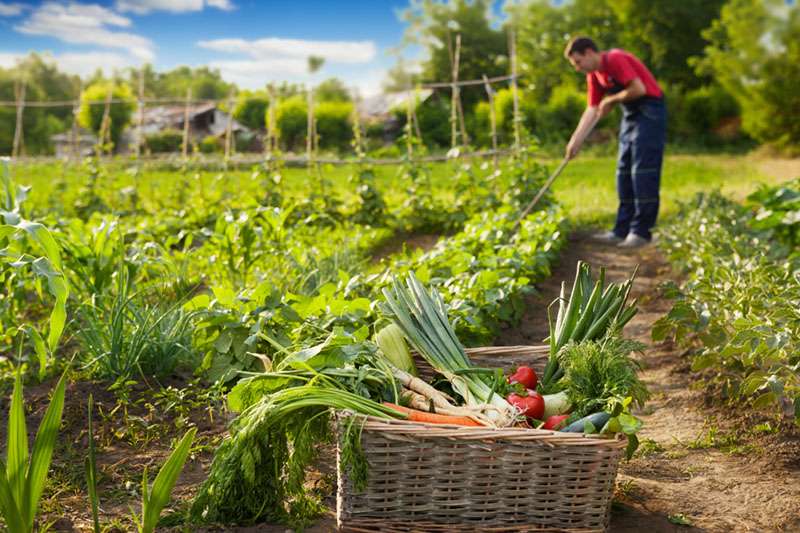
Building Resilient Communities
Collaborative living and intentional communities
Building resilient communities is an integral part of self-sufficiency. Explore collaborative living models such as intentional communities or co-housing initiatives. Engage with like-minded individuals who share your self-sufficiency values and create networks based on shared resources and mutual support.
Sharing resources and skills
Share resources and skills within your community to foster self-sufficiency. Organize workshops or skill-sharing events to exchange knowledge on gardening, renewable energy systems, or food preservation. Collaborate on community-based projects such as community gardens, tool libraries, or shared workspaces.
Supporting local businesses
Supporting local businesses is vital for building resilient communities and promoting self-sufficiency. Purchase goods and services from local farmers, artisans, and businesses to minimize reliance on large-scale corporations. This supports local economies and encourages sustainable and ethical practices within your community.
Community emergency preparedness
Community emergency preparedness is crucial for resilience and self-sufficiency during crises or natural disasters. Organize and participate in emergency preparedness drills, establish communication networks, and share resources for collective resilience. Collaborate with local authorities and organizations to develop community-wide emergency response plans.
Overcoming Challenges in Self-Sufficiency
Dealing with setbacks and failures
Challenges and setbacks are an inherent part of the self-sufficiency journey. Recognize that failures and mistakes are learning opportunities and part of the growth process. Develop resilience, adaptability, and problem-solving skills to overcome obstacles and maintain motivation.
Adapting to changing circumstances
Adapting to changing circumstances is vital for long-term self-sufficiency. Embrace flexibility and openness to adjust your strategies as needed. Stay informed about advancements in self-sufficient practices and technologies to ensure ongoing success.
Finding solutions to common difficulties
Research and learn from others who have overcome common difficulties in self-sufficiency. Utilize online resources, join self-sufficiency forums, and connect with like-minded individuals to exchange ideas and find practical solutions. Embrace a mindset of continuous learning and improvement.
Teaching Self-Sufficiency to Future Generations
Instilling self-reliance in children
Instilling self-reliance in children is essential for cultivating future self-sufficient generations. Involve them in age-appropriate tasks such as gardening, cooking, and DIY projects. Encourage critical thinking, problem-solving, and creativity, empowering them to become active participants in their own self-sufficient journeys.
Education and practical skills training
Education and practical skills training play a crucial role in teaching self-sufficiency. Support initiatives that promote hands-on learning experiences and practical skills development. Seek out educational resources, workshops, or courses that focus on sustainable living, renewable energy, and organic farming.
Passing down knowledge and traditions
Passing down knowledge and traditions is an essential part of preserving self-sufficiency practices. Document your experiences, techniques, and lessons learned to share with future generations. Emphasize the importance of sustainability, independence, and self-reliance as core values to be cherished and continued.
Conclusion
Recap of self-sufficiency principles and practices
Achieving a self-sufficient lifestyle requires a holistic approach, encompassing various aspects of life. From growing your own food to generating your own energy, becoming self-sufficient involves a range of skills and practices. It promotes resilience, sustainability, and personal fulfillment.
Inspiring a journey towards self-sufficiency
Embarking on a journey towards self-sufficiency is a transformative and rewarding experience. By evaluating your current lifestyle, setting goals, and developing necessary skills, you can gradually reduce your reliance on external systems and become more self-reliant. Embrace the principles and practices of self-sufficiency to create a sustainable and meaningful life for yourself and future generations.

